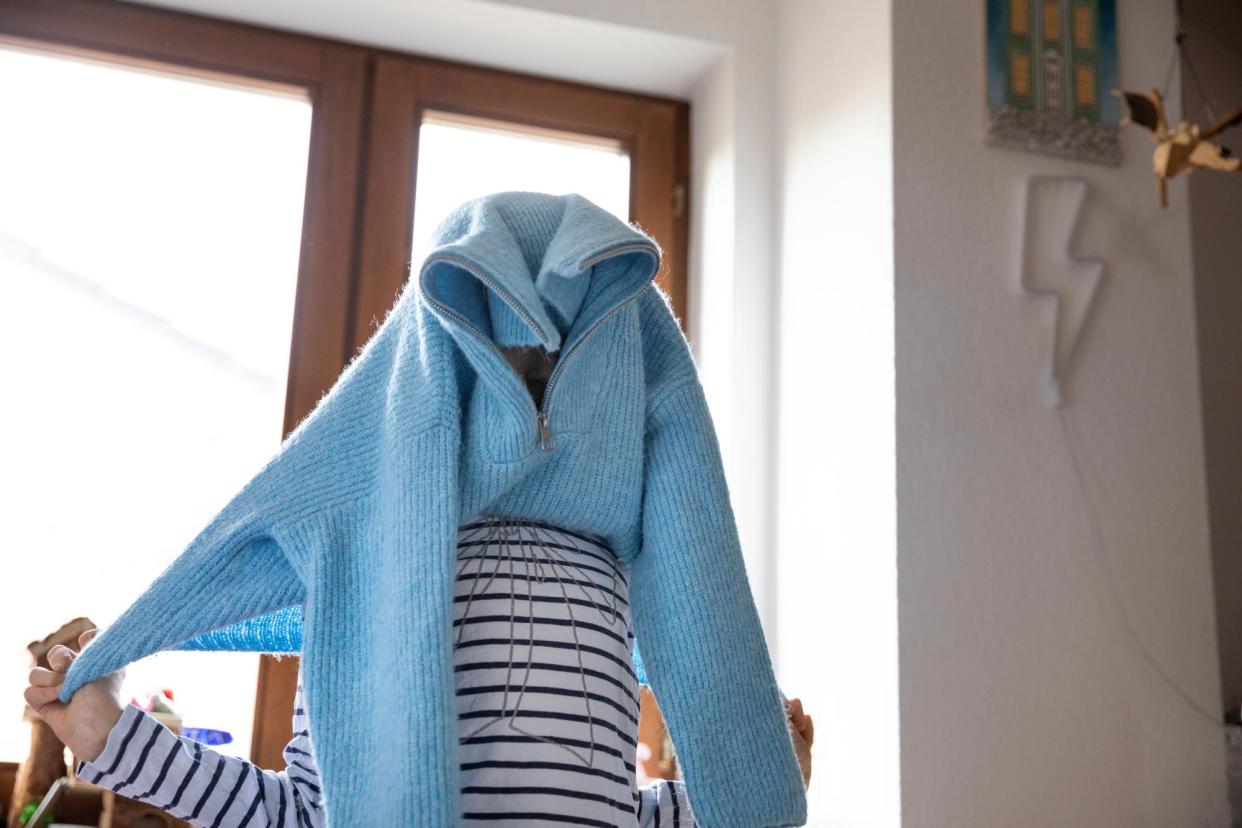Cut down on baby clutter: how to recycle, swap and upcycle your children’s clothes

They’re so cute in that onesie but the fact is they’ll outgrow it in three months. Clothing littlies can be an area where sustainably minded folks surprisingly find themselves running out to purchase fast-fashion goods (myself included). In finding alternatives to buying new, it can be hard to know where to start: do you op shop till you drop? You could, but you might not always find the sizes you need or items that suit your aesthetic. And let’s admit it: a small joy of parenting is putting your kid in a cute outfit.
Fortunately, sustainably minded parents around Australia have developed businesses, organisations and strategies for dressing their kids well. There’s no one-size-fits-all approach but each family can discover what works for them by integrating some of these hacks into their child-styling.
Ditch new clothes
Use-Ta! is an online second-hand clothing shop that started in 2014 when Kiri Gorter was doing overtime as a toddler parent and house cleaner. While on cleaning jobs, Gorter came to “realise how many families are struggling to keep control over the clutter in their homes”. With a background in fashion retail, she was surprised to find herself struggling to dress her baby. “I have expensive taste but not the budget to match,” she explains. So she schemed a way to help other families, herself, and the planet.
Related: ‘The baby-gear silk road’: three parents on how to sustainably source infant clothes
Buying second-hand kids’ clothes is not only “more affordable” and a great way to reduce your carbon footprint, Gorter says, it also “opens up the possibilities for self-expression, particularly for older children”. She continues: Most retail stores are generally “pushing a fashion ‘story’, a uniting colour-palette or ‘look’” but, when shopping second-hand, “it’s way more random, so you can pick and choose the clothes that speak to you”.
Gorter concedes that some items are best bought new: singlets, socks and pyjamas. She recommends buying the highest quality goods available to ensure longevity (with the aim being an overall lower cost-per-wear) and “select[ing] natural fibres that will eventually degrade” rather than synthetic fibres, which can sit in landfills for up to 200 years before they decompose.
Swap before you buy
Clothing swaps are not only a great way to score free stuff and get rid of whatever’s in the closet – they also double as social events. In 2021 and Adelaide mum and educator, Jessica Gerrard, joined with local mothers to host a clothing swap in a local pub. The setting “gave parents a chance to catch up kid-free, enjoy a wine, and swap clothes”. Subsequent swaps were held at the local primary school and park grounds, where the meetings often morphed into relaxed picnics.
The swaps became “a chance to connect with other families and build communities”, Gerrard says. For pregnant mothers especially, there was the chance to meet seasoned parents and gather early parenting tips along with items. “It feels really good to know your children’s clothes will get another life and that you are reducing the amount of textile waste going to landfill,” she says.
Gerrard has a few tips for those hoping to organise a clothing swap to increase its success: ask other parents for help with setting up and packing up. Consider reaching out to community groups who may be able to promote the swap or provide a venue. Ask parents to “pre-sort their swap clothes into sizes to make set-up quick and easy on the day”.
And don’t just heap the clothes into a pile. Rather, bring picnic rugs and blankets to lay the clothes on; post signs that indicate sizes; and bring some reusable or paper bags for leftover clothes. These leftovers can go to “organisations like Welcoming Australia who support refugee families and not-for-profits like Treasure Boxes who help families facing hardship to access childhood essentials”.
Be strategic
A fashion retail professional, Greta Gramazio, strikes a balance between regular op shopping and buying new with a discerning eye.
Hitting the same second-hand shops at regular intervals – weekly or biweekly – is the key to finding great stuff they have just stocked, she says. But when she does buy new for her little one she opts for longer-lasting natural fibres like cotton and wool. Cotton, she says, wears better – it “gets softer and comfier with each wash”, while wool requires more care but offers warmth and longevity, particularly if it’s a handmade item.
Related: Press for success: four tips from readers on the best ways to sell secondhand clothes
Buy Nothing groups (usually hosted on Facebook) are also a time-tested way to find children’s clothes, and something I wish I’d known about in the early days of parenting is the existence of “nappy libraries” which allow you to compare the different prices and fit of various cloth nappy brands/models, finding the right one before you spend hundreds of dollars on the range and all of its accessories. In some areas, there are even council rebates offered for using a cloth nappy library.
Innovative Australian platforms including Little Renters and Curious Kind allow parents to rent children’s clothes – Rent the Runway for babies, anyone? When it’s time to size up, you simply send back and swap. (No charges for stains or damages, of course.) There’s also a massive global movement of upcycling various materials (blankets, swaddles) into children’s clothing – a quick search on Etsy or YouTube will show you plenty of makers to support or emulate.
Thinking sustainably about your children’s sartorial carbon footprint goes beyond those carbon footprints – children ultimately model their behaviour based on what they have observed us doing, the choices we make. If they see their parents crafting thoughtful wardrobes while building community they are more likely to grow up as conscientious consumers looking for ways to reduce their impact.

 Yahoo News
Yahoo News 
